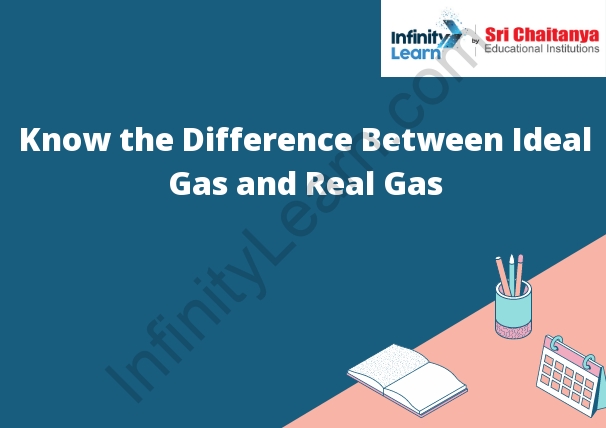Table of Contents
States of Matter
Know the Difference Between Ideal Gas and Real Gas: States of matter are the different forms that matter can take. There are three states of matter: solid, liquid, and gas.
The gaseous state of matter is the form of matter that takes up the most space. In a gas, the particles (atoms or molecules) are far apart from each other and move freely. Gases are not solid, liquid, or solid.
There are three gas laws that describe the behavior of gases. The ideal gas equation is a mathematical equation that describes the behavior of an ideal gas. An ideal gas is a gas that obeys the gas laws perfectly. A real gas is a gas that does not obey the gas laws perfectly. The difference between an ideal gas and a real gas is the difference between the real gas and the ideal gas.
The ideal gas equation is PV = nRT. PV is the pressure of the gas, n is the number of moles of the gas, R is the ideal gas constant, and T is the temperature of the gas. The ideal gas equation is a mathematical equation that describes the behavior of an ideal gas. An ideal gas is a gas that obeys the gas laws perfectly. A real gas is a gas that does not obey the gas laws perfectly. The difference between an ideal gas and a real gas is the difference between the real gas and the ideal gas.

Gases are compressible:
A gas is compressible because its molecules are far apart and there is a lot of empty space between them. When you push down on a gas, the molecules are forced closer together and the gas becomes denser.
Kinetic- Molecular Theory of Gases
The kinetic-molecular theory of gases is a model that explains the behavior of gases in terms of the motion of their individual molecules. According to this theory, the pressure of a gas is due to the collisions of its molecules with the walls of the container. The temperature of a gas is determined by the average kinetic energy of its molecules.
Boyle’s Law
Boyle’s law is a physical law that states that the pressure of a gas is inversely proportional to its volume. In other words, as the volume of a gas increases, the pressure of the gas decreases, and vice versa. Boyle’s law named after Robert Boyle, who discovered it in 1662.
Charles’s Law
The pressure of a gas is inversely proportional to the volume of the container in which it confined.
Gay – Lussac’s Law
Gay – Lussac’s law states that the pressure of a gas is inversely proportional to the volume of the gas.
Avogadro’s Law
The number of particles in a given amount of a substance is always the same.








